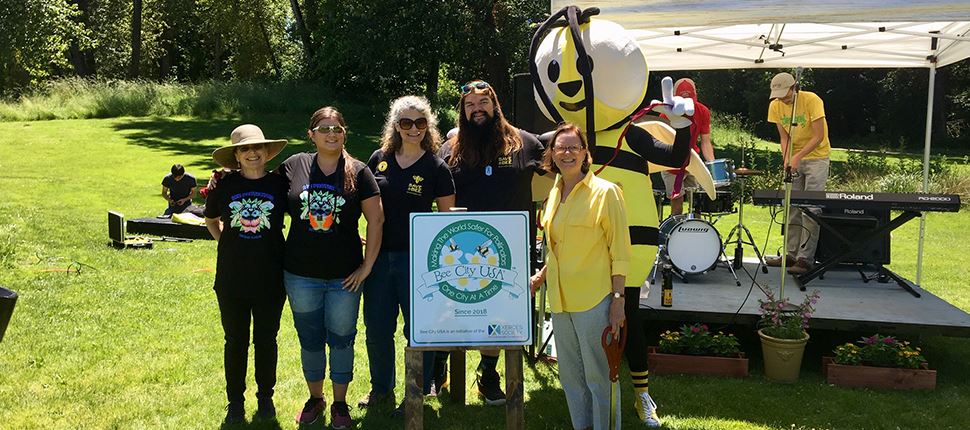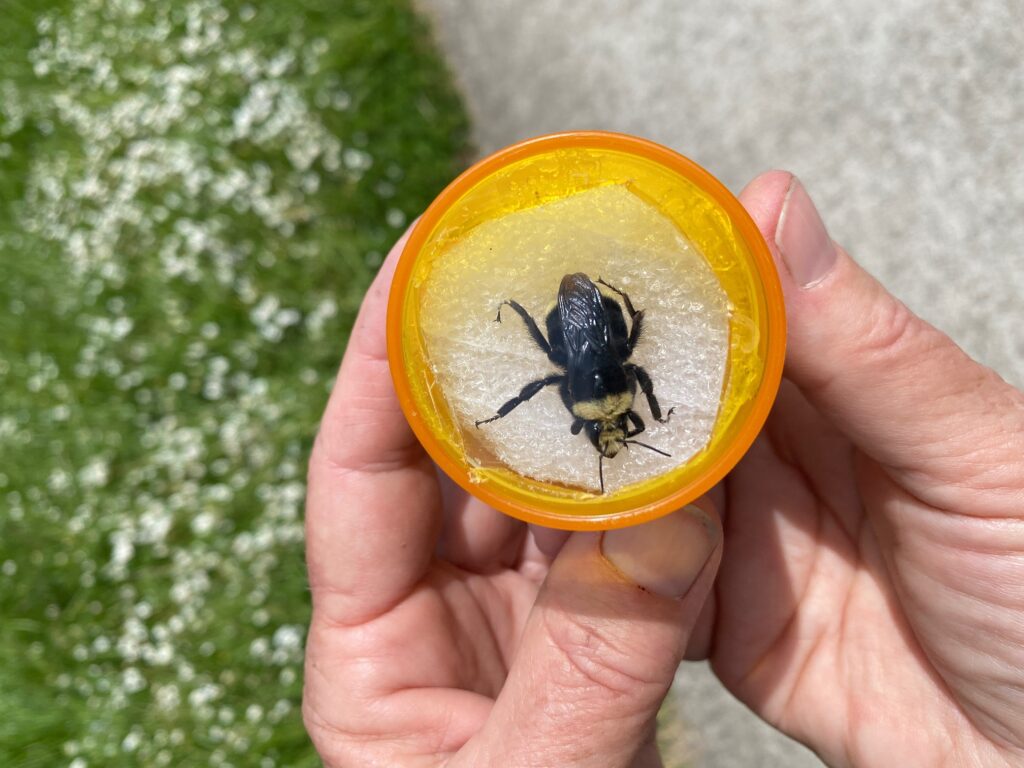Guest blog by Krystal Abrams, Regenerative Ecosystems & Pesticide Projects Manager, Beyond Toxics, Bee City USA – Eugene Committee Chair

Beyond Toxics helped to organize and initiate the Bee City USA project in Eugene as a response to the growing concern for pollinator health and safety, especially around schools and public spaces that are regularly treated with pesticides and herbicides. Our work to strengthen school Integrated Pest Management policies to prioritize children’s health and environmental health made us realize that more can be done around school grounds and neighborhoods to not only prevent widespread pesticide use, but also to enhance soils and landscapes to naturally deter pests and support predatory insects and native pollinators.
In 2018, the City of Eugene passed a resolution to become a Bee City USA affiliate. This marked the official beginning of a community-organized effort to enhance pollinator habitat and reduce harm to pollinators within our city limits. Since then, our Bee City USA committee (which consists of people representing City of Eugene’s Parks and Open Space Division, Lane County Audubon Society, Xerces Society, Beyond Toxics, GloryBee Foods, Mount Pisgah Arboretum, and Walama Restoration Project) has organized an array of events to get people excited about bees and learn about ways they can support these special insects in their homes and neighborhoods.
We’ve hosted celebrations in a local park, trivia nights at a local cidery, educational webinars, native plant nursery tours, and an annual bee survey where we welcome the public to join us on a field trip to catch, identify, and release native bees.

We initiated the first community-science bee survey in Eugene’s Whilamut Natural Area to determine if native bees were using the flowers and grasses that were planted and seeded in the area during rehabilitation efforts that took place after a municipal landfill was removed and hauled away. We organized this small survey with the intent to grow our understanding of the native pollinator species present in urban parks and restored natural areas. We also hoped to learn about the foraging patterns of these pollinators. First done in 2018, this survey has since become an annual activity taking place in the spring or early summer.
Identification of bees to species, sometimes even to genera, is a difficult task that takes years, if not a lifetime, to learn. We relied on local expert August Jackson, of the Mount Pisgah Arboretum and an instructor with the Oregon Bee Atlas, to help during the survey. Since not all bees can be identified to species without killing the bee, we opted to identify bees as accurately as possible with live specimens. Bees were caught with insect nets, then placed into jars. Some bees were cooled until bee activity slowed in order to photograph and examine them more closely. No bees or humans were harmed in the process! The results of this survey will help us understand the impacts of habitat restoration on bees, and build our knowledge about local species so we can continue making decisions that support our pollinator communities.


We’re excited to report on the species we identified during the 4th Annual Eugene Bee Survey, held on April 28th, 2021, in the Whilamut Natural Area. In addition to the nonnative European honey bee (Apis mellifera) that is so ubiquitous, we identified 19 species of native bees during the bee count.
- Bumble bees
- California bumble bee (Bombus fervidus/californicus)
- Yellow-faced bumble bee (Bombus vosnesenskii)
- Hunt’s bumble bee (Bombus huntii)
- Red-belted bumble bee (Bombus rufocinctus)
- Long-horned bees
- Eucera cf. edwardsii
- Mining bee
- Andrena nigrocaerulea
- Andrena sp.
- Nomad bees
- Nomada sp. 1
- Nomada sp. 2
- Small carpenter bees
- Ceratina acantha
- Mason bees
- Osmia sp.
- Hoplitis albifrons
- Sweat bees
- Agapostemon texanus
- Halictus tripartitus
- Halictus farinosus
- Lasioglossum cf. sisymbrii
- Lasioglossum (Dialictus) sp. 1
- Lasioglossum (Dialictus) sp. 2
- Cuckoo bees
- Sphecodes sp.





